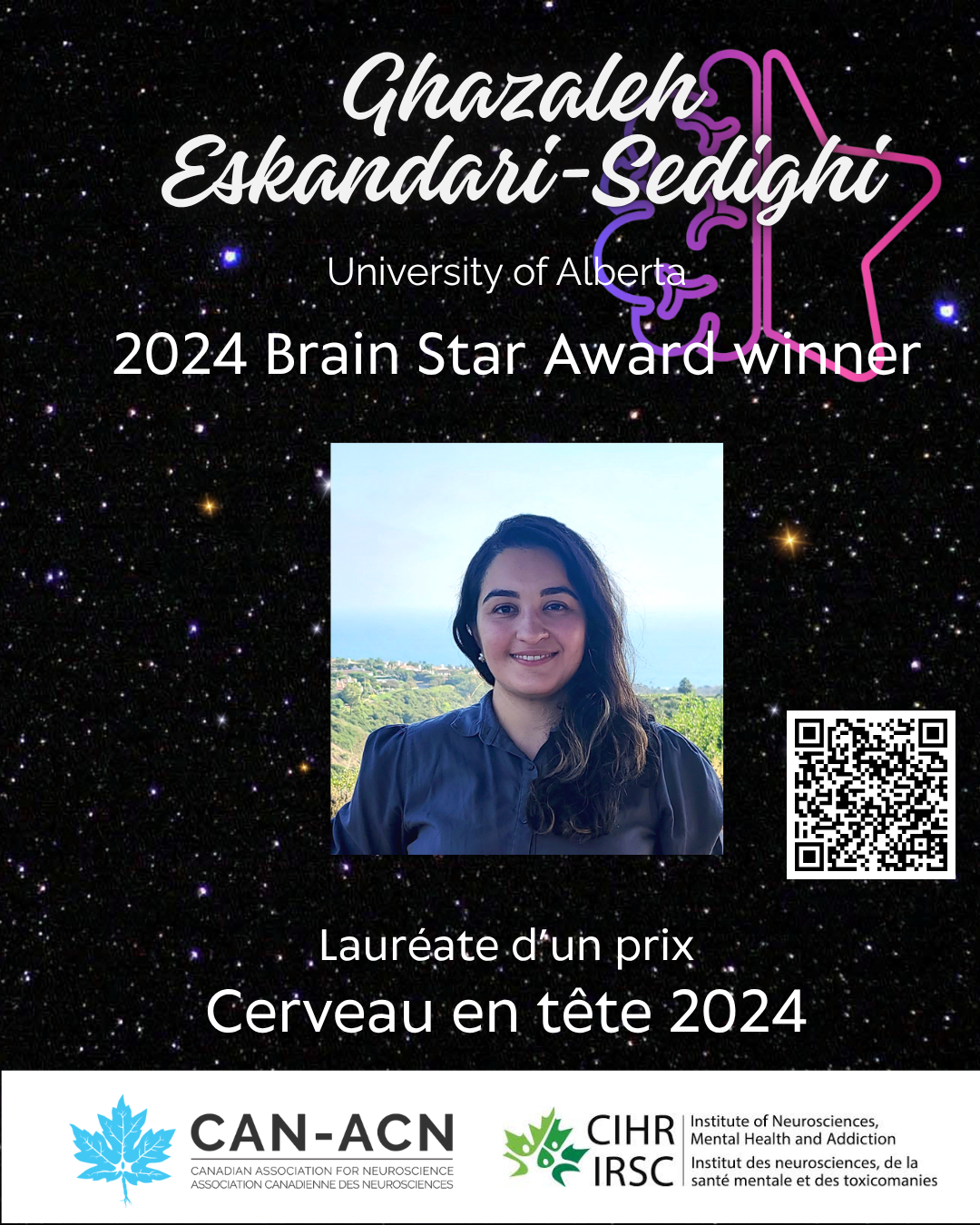Identification of CD33m as a new protective factor in Alzheimer’s Disease development.
Immune cells in the brain, called microglia, are thought to be critical in Alzheimer’s disease (AD) development through numerous functions, including their ability to remove amyloid beta (Aβ), which is protein that accumulates in the brains of AD patients. In this study, Ghazaleh Eskandari-Sedighi, working in Matthew Macauley’s laboratory at the University of Alberta, focused on understanding the mechanism of action of a protein called CD33, which has been identified as one of the top-ranked drivers in the development of AD and that is predominantly found in microglia in the brain. By transferring different versions (called isoforms) of this protein in a mouse model of AD, they were able to show that these different isoforms have opposite effects on microglial cells and AD progression.
CD33 is a receptor that modulates immune response that exists in two forms: a long isoform CD33M (Major) and a short isoform: CD33m (minor). Understanding how CD33 isoforms differentially impact microglial cell function has been challenging due to functional divergence between CD33 from mouse and humans. In this study, the researchers introduced the human CD33 gene in a mouse model of AD, which accumulates Aβ protein. In these mice, they found that CD33 isoforms have opposing effects on the response of microglia to Aβ accumulation. The larger CD33M increases the total level of Aβ and formation of plaques with a diffuse nature, which correlates with fewer number of microglia as well as higher number of dysfunctional neurons. In contrast, CD33m gives rise to opposite outcomes; beyond decreasing total Aβ levels, CD33m skews formation of compact Aβ deposits, correlating with increased microglia and fewer dysfunctional neurons. Overall, this work reveals how CD33, as a top genetic susceptibility factor for AD, is connected to microglial cell function.
Read the full story here: https://can-acn.org/brain-star-award-winnerghazaleh-eskandari-sedighi/
Scientific publication: Eskandari-Sedighi, G., Crichton, M., Zia, S. et al. Alzheimer’s disease associated isoforms of human CD33 distinctively modulate microglial cell responses in 5XFAD mice. Mol Neurodegeneration 19, 42 (2024).

